
|
Getting your Trinity Audio player ready...
|
Blog SEO is an essential practice for any blogger who wants to attract more organic traffic to their website. With more than 600 million blogs on the web, it is essential that you know how to improve the ranking of your posts on search engine organic results pages (SERPs).
In this article, we'll explore how you can master blogging SEO and ensure your content shines in search.
What is SEO?
SEO (Search Engine Optimization) is the practice of optimizing your website so that it performs better in organic search results. This involves a combination of strategies, from choosing the right keywords to technically optimizing the website. In other words, SEO It’s like preparing the perfect ground for your content to be discovered by those who need it most.
Therefore, in the context of blogs, blog SEO focuses on optimizing the content and structure of the blog so that it is easily found and indexed by search engines such as Google, Bing and Yahoo.
Blog SEO works in two spheres: macro and individual pages. Thus, the macro structure refers to the architecture of the website, including navigation and reciprocal internal links. On the other hand, individual pages refer to the technical and user experience elements such as title, subtitles, content, keyword, meta description, alt text, and formatting.
Importance of SEO for blogs
But why is SEO so important? Think of SEO as a megaphone. Without it, your blog might be amazing, but few people will hear about it. With SEO, you amplify your voice, reaching a larger, targeted audience. This not only increases your blog traffic but also improves engagement and conversion.
Therefore, in an increasingly competitive digital world, having a blog well positioned in search results is crucial to success. Through SEO, you can:
- Increase organic traffic: The better your blog's positioning in search results, the more people will visit it organically, that is, without the need to invest in ads. This way, your content will have a better chance of being found by people who are searching for information related to your niche market.
- Generate leads and sales: A well-positioned blog can be a powerful tool for generating leads and sales. Whenever you create high-quality, relevant content, you attract potential customers to your website and increase the chances of converting them into customers. After all, you will attract people who are genuinely interested in what you have to offer.
- Build authority: A standout blog demonstrates expertise and authority in your niche market. This can help strengthen your brand and increase trust with your customers.
- Improve ROI: SEO is a low-cost marketing strategy with high return on investment (ROI). By investing in SEO, you can achieve long-lasting and scalable results.
- More engagement: SEO-optimized content tends to be more relevant and interesting to readers, which increases time spent on the site and engagement with the content.
Keyword Research
Keywords are the terms people use to search for information on the internet. Therefore, the process of optimizing your blog for relevant keywords is necessary to increase the chances of your content being found by people who are searching for information related to your niche market.
It's important to include these keywords organically in your blog content, as long as it sounds natural to the reader. Therefore, avoid excess repetition and term density to avoid punishment from the algorithm.
Firstly, to start understanding which keywords are best for your business, you must understand users' search intent. It reflects the reader's objective when typing a term in the search box. To check it, consult the search engine itself, which normally ranks a corresponding page in first place. However, this should not be seen as a rule, as there are cases where there are no texts that correspond to the real search intent.
Tools for Keyword Research
Tools like Google Keyword Planner, SEMrush, Ubersuggest, and Ahrefs are excellent for finding relevant keywords. They provide data on search volume, competition and even related keyword suggestions. Using these tools can make a big difference to your SEO strategy. Let's summarize:
- Google Keyword Planner: Free tool from Google that allows you to research the search volume and competition for your keywords.
- Ubersuggest: A paid tool that offers a variety of features for keyword research, including competitor analysis and related keyword suggestions. Contains a free version, with reduced features.
- SEMrush: Like Ubersuggest, it is a paid tool that offers a variety of SEO features, including keyword research, competitor analysis and website auditing, and also has a free version, with some good features.
- Ahrefs: Offers features such as keyword research, backlink analysis, website audit, rank tracking, competitor analysis, and content exploration, helping to optimize SEO strategies.
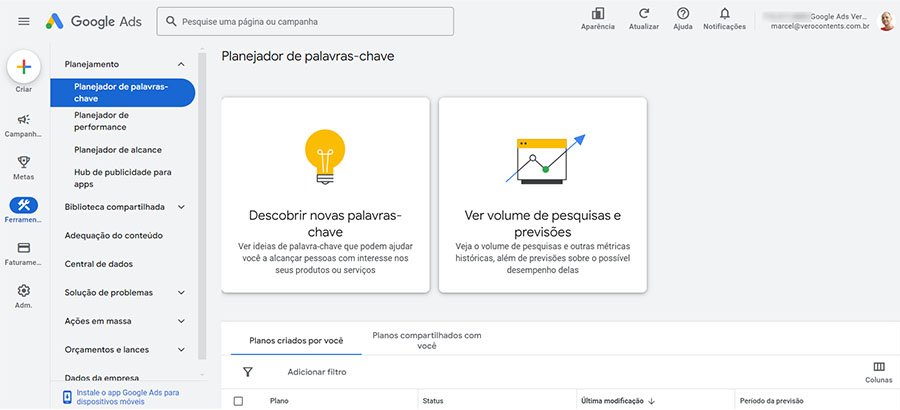
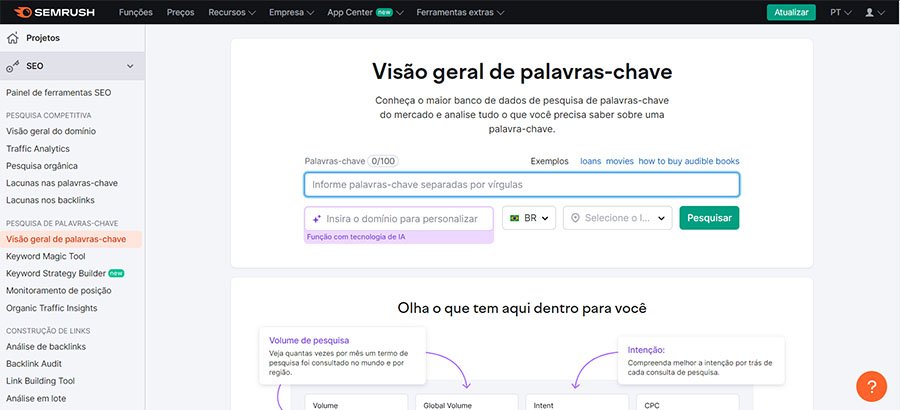
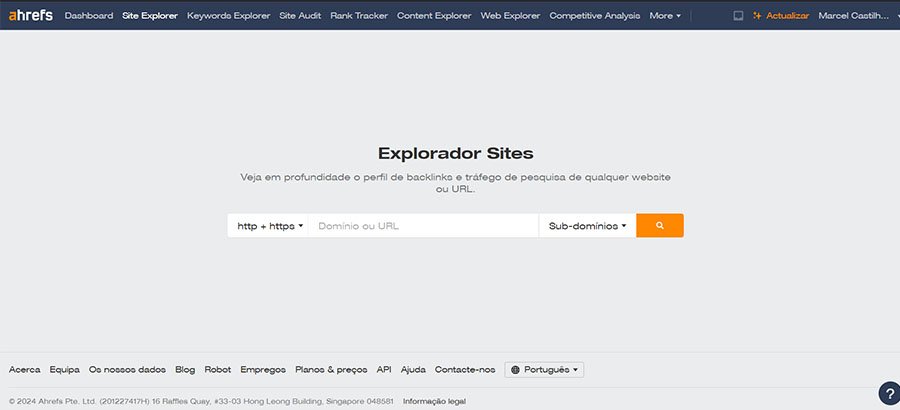
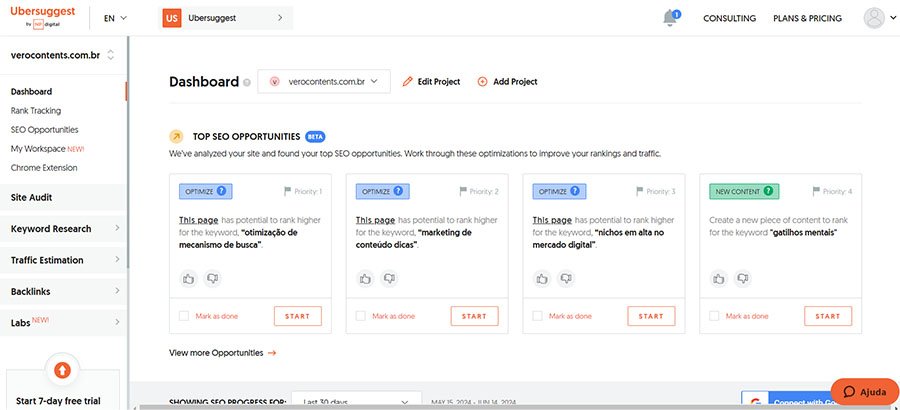
How to choose the right keywords
Choosing the right keywords involves balancing search volume and competition. keywords long tail (long-tail keywords) are generally less competitive and more specific, which can be advantageous for smaller blogs or those just starting out.
Therefore, we have some factors to consider when choosing keywords for your blog, such as:
- Relevance: Keywords must be relevant to your blog content.
- Search volume: Keywords should have a good search volume, but not be so competitive that it is impossible to rank them.
- Competition Level: Competition for the keywords should be moderate. If the competition is too high, it will be difficult for your blog to rank for these keywords.
- Search intent: As we’ve already said, it’s important to consider the search intent behind your keywords. Are people searching for information, products or services? By understanding search intent, you can create content that is more relevant to your target audience.
Optimized content production
Writing attractive and optimized titles
Your post title is the first thing readers and search engines see. A good title should be attractive and include the main keyword. Therefore, think of titles that spark curiosity or offer a solution to a specific problem.
Tips for writing a good title:
- Use relevant keywords.
- Be concise and direct.
- Awaken the reader's curiosity.
- Use numbers or lists.
- Include strong keywords at the beginning of the title.
Use of headings and subheadings
Your blog's headings and subheadings help structure your content and make it easier to read. Therefore, they are also important for SEO, as search engines use headers to understand the content of your blog.
Tips for using headings and subheadings:
- Use a hierarchy of headings (H1, H2, H3, etc.).
- Use relevant keywords in headings.
- Be concise and direct.
- Use headings to highlight the most important information.
Content quality and relevance
Quality content is content that answers readers' questions, offers valuable information, and is well written. Furthermore, it must be relevant to the target audience and include keywords in a natural way. Remember, search engines value user experience, so focus on creating useful and engaging content.
Tips for writing good textual content:
- Do research to ensure your content is accurate and up-to-date.
- Use clear and concise language.
- Break your content into short, easy-to-read paragraphs.
- Use images and videos to illustrate your content.
- Include a call to action (call to action) at the end of your content.
Optimization and creativity
Blog SEO is a discipline that is based on experimentation. This means that the techniques applied are tested and verified. However, writing is not an exact science, so rules can harm it. You need to find a balance between optimization and creativity to produce quality content.
Spelling, vocabulary and cohesion
Spelling, vocabulary and cohesion are essential to the quality of the content. On the other hand, it's easy to get caught up in the technical details and lose sight of the reader. Remember that the content must be clear, concise and easy to understand.
Use of images and videos
Images and videos not only make your post more visually appealing, they also improve SEO. Furthermore, videos can increase the time spent on the website, a positive factor for SEO. Some tips:
- Use keyword-rich alt text and descriptions for your images.
- Use high-quality images and videos.
- Use captions on images and videos.
On-Page SEO
Meta descriptions
Meta descriptions are short summaries of page content that appear in search results. They must be persuasive and include the main keyword. Good use of meta descriptions can increase the click-through rate (CTR) for your blog.
Tips for writing a good meta description:
- Summarize your blog content in a few sentences.
- Use relevant keywords.
- Include a call to action.
- Be convincing and persuasive.
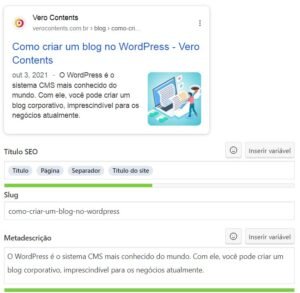
Friendly URLs
Friendly URLs should be short and descriptive. They help both search engines and users understand what your page is about. Therefore, include the main keyword in the URL and avoid using too many parameters or numbers. Use lowercase letters and avoid special characters, such as spaces, hyphens and underscores.
Internal and external links
Internal and external links help to improve the navigation of your blog and distribute it throughout your website. They can also help improve your blog's SEO, as search engines consider links when ranking content.
Some good practices for using internal and external links include:
- Use of internal links to direct readers to other relevant articles on your blog, always within context.
- Directing readers to reliable and relevant websites.
- Use of descriptive anchor text for links.
Technical SEO
Sitemap
A sitemap is an XML file that lists all the pages on your blog. It helps search engines index and find all pages on your website. You can use online sitemap generators (for those who use WordPress, Yoast SEO is a plugin that has this function) and sends it to Google Search Console.
Website loading speed
Website loading speed is crucial for user experience and SEO. Slow websites have higher bounce rates. So, use tools like Google PageSpeed Insights to identify and fix performance issues. To achieve better results, here are some tips:
- Use a lightweight, optimized theme on your blog.
- Optimize your images.
- Use a caching service.
- Minify your HTML, CSS and JavaScript code.
Responsiveness and mobile-first
With more people accessing the internet via mobile devices, having a responsive website is essential. Google prioritizes mobile-first indexing, which means that the mobile version of your website is considered the main one. So, make sure your blog is mobile-friendly.
SSL Certificate
An SSL (Secure Sockets Layer) certificate ensures that data between the user's browser and your website is encrypted. In addition to increasing security, SSL is a ranking factor on Google. So, if your website is not HTTPS, it's time to make the change.
Intuitive navigation and user experience
Your blog navigation should be intuitive and easy to use. Therefore, readers should be able to easily find what they are looking for without getting lost on your site.
To do this, you should use a clear and concise navigation menu, in addition to including categories and subcategories to organize your content. Also use breadcrumbs to help readers find their way around your site.
Monitoring and analyzing results
Tools like Google Analytics and Google Search Console are essential for monitoring your blog's SEO performance. They provide valuable data about traffic, user behavior and positioning in SERPs.
Furthermore, some tools that we have already mentioned, such as SEMrush, Ubersuggest and Ahrefs can also be used to analyze the results.
Above all, keep an eye on metrics like bounce rate, session duration, pages per session, and CTR (click-through rate). Also monitor traffic and changes in search results for your keywords. These metrics help you understand how users interact with your blog and where there are opportunities for improvement.
Ultimately, SEO is not a one-time task but an ongoing process. So, based on the data you collect, make regular adjustments to further optimize your content and website. Test different strategies and see what works best for your audience.
Conclusion
Blog SEO is a constant journey of learning and improving. From keyword research to technical optimization and results analysis, each step is crucial to ensuring your content stands out in search engines. Remember, SEO is a marathon, not a sprint. With patience, dedication and the right strategies, you will see your blog grow and reach new heights.
Extra Tips:
- Be patient: SEO takes time to show results. Don't be discouraged if you don't see immediate results.
- Be consistent: It's important to be consistent with your SEO efforts. So keep publishing high-quality content and optimizing your blog regularly.
- Stay updated: SEO trends are constantly changing, so it's important to stay up to date on the latest trends.
- Ask for help: If you need help with your blog's SEO, there are several resources available, such as SEO consultants and SEO tools.
So, are you ready to start optimizing your blog for search engines?
If you need help, talk to an expert of SEO from Vero Contents!
Image: Freepik

Marcel Castilho is a specialist in digital marketing, neuromarketing, neuroscience, mindfulness and positive psychology. In addition to being an advertiser, he also has a Master's degree in Neurolinguistic Programming. He is the founder and owner of Vero Comunicação and also the digital agency Vero Contents.



